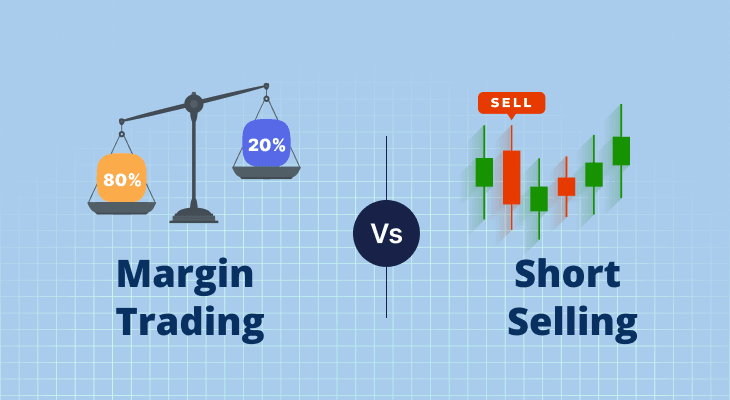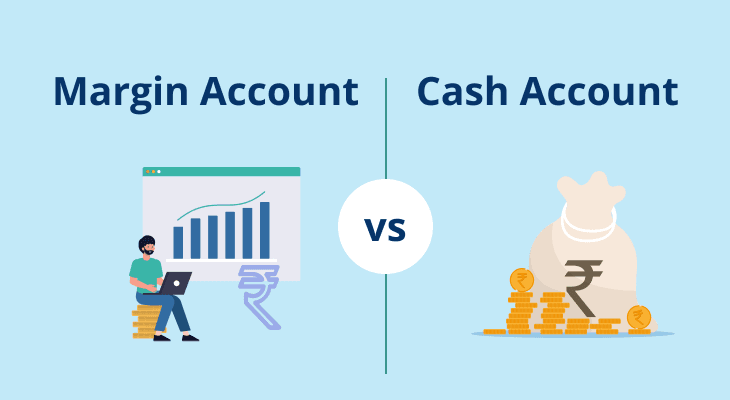
Table of content
- What is Margin Trading?
- How is Margin Trading Carried Out?
- Margin Trading in India: Regulatory Insights
- What is Short Selling?
- How is short selling carried out?
- Difference Between Margin Trading and Short Selling
- Advantages and Risks of Margin Trading and Short Selling
- India's Regulatory Environment: Safeguarding Market Integrity
- Practical Considerations for Traders: Navigating the Complexities
- Conclusion
Margin Trading Vs Short Selling: A Comparative Analysis
Setting out on the exciting journey of stock exchange strategies is similar to entering a chess game, where each move counts and strategic finesse is fundamental. We will not only discuss the intricacies of margin trading vs short selling in this comprehensive blog that is intended for the smart Indian investor audience, but we will also shed light on the financial markets' often-overlooked chessboard. Before we unravel the mysteries of these unique trading methodologies, Did you know that speculative traders in the Dutch Golden Age employed short selling to profit from the tulip bulb market bubble? Now, let's explore how margin trading and short selling can become your strategic allies in the complex world of stock trading.
What is Margin Trading?
A financial manoeuvre known as margin trading allows traders to carry out transactions with funds that are in excess of their available funds. This strategic methodology orders the usage of a margin account given by brokerages, empowering traders to enter the market by committing just a fraction of the total exchange value, termed as the margin money.
How is Margin Trading Carried Out?
Consider a situation where your brokerage account is ₹10,000, and you try to procure 200 shares of Organisation ABC Limited, each valued at ₹100. The total transaction value amounts to ₹20,000, an aggregate that could prevent a traditional brokerage because of lack of funds. Notwithstanding, equipped with a margin account, you can continue by paying a simple ₹4,000, addressing the 20% margin requirement.
The settlement cycle, as of late revised to T+1, expects you to close the position inside a predefined period, normally two days after trading. You can profit from selling the shares if the price rises. On the other hand, meeting the margin requirement becomes crucial if the price does not change or falls, which could lead to losses.
Margin Trading in India: Regulatory Insights
Understanding the Indian regulatory scene is fundamental to participating in margin trading. When it comes to establishing margin requirements, the Securities and Exchange Board of India (SEBI) plays a crucial role. These prerequisites, differing across trading segments, consider factors like unpredictability, past performance, and the predominant market situation. When it comes to protecting investor interests and maintaining market integrity, SEBI plays a crucial role.
What is Short Selling?
Short selling, a distinct trading strategy, allows brokers to sell shares they don't have in their Demat account. This system emerges through different margin trading offices presented by brokerages, empowering traders to benefit from expected decreases in stock prices.
How is short selling carried out?
The steps involved in short selling are explained in detail:
Borrowing Or Loaning Shares
The broker sells the corresponding shares on behalf of the traders who borrow them.
Proceeds In Trading Account
On a T+2 day basis, the brokerage credits the trader's trading account with the proceeds.
Repurchasing Shares
As the share price declines, the trader instructs the broker to repurchase the shares, closing the position.
Transfer Of Shares
The sale proceeds are transferred to the trader's margin trading facility account by brokers, who then purchase shares.
Net Profit Calculation
The net benefit, factoring in charges like brokerage expenses, taxes, and interest margins, is credited to the trading account.
Difference Between Margin Trading and Short Selling
Let's look at the distinctions between buying on margin vs short selling
Market Perspective
Margin Trading: Investors can take advantage of potential market upswings by employing this strategy, which is carried out with an optimistic outlook.
Short selling: Short selling is grounded in a pessimistic market view, expecting to benefit from expected price declines.
Risk Exposure
Margin Trading: The increased exposure to market fluctuations places investors at greater risk. Losses can surpass the initial investments.
Short Selling: The risks in short selling emerge from possible unlimited losses on the off chance that the asset's price ascents significantly.
Profit Mechanism
Margin Trading: Capitalising on the rise in asset value results in profit. It's a technique made for bullish market conditions.
Short Selling: Profit is made when the asset's value declines, making it a methodology lined up with bearish market sentiments.
Market Conditions
Margin Trading: Thrives in bull markets where it is anticipated that asset values will rise.
Short selling: Flourishes in bear markets where asset values are expected to decline.
Leverage Usage
Margin Trading: Use existing cash flow to upgrade purchasing power and likely returns.
Short Selling: involves borrowing securities in order to sell them, which results in the creation of a leveraged position betting against the asset's appreciation.
Advantages and Risks of Margin Trading and Short Selling
Advantages Of Margin Trading: Past Monetary Influence
One of the essential benefits of margin trading is the possibility to utilise different trading opportunities without being blocked by fund limitations. Besides, it fills in as a short-term financing system without causing extra expenses, giving traders liquidity and adaptability.
Risks Of Margin Trading: Navigating The Risks
Despite the obvious advantages of margin trading, it is essential to acknowledge the inherent risks. Participating in leveraged positions can enhance losses, and assuming the market moves against the trader, it might bring about significant financial difficulties. Risk management methodologies become fundamental to navigating these risks successfully
Advantages Of Short Selling: Profiting From Market Downturns
Short selling opens up a new way for investors to make money from falling stock prices. This makes it possible to trade speculatively even if you don't own the shares. This technique turns out to be especially important in bearish market situations.
Risks Of Short Selling: Adjusting On A High-Chance Tightrope
The risk-reward proportion in short selling is intrinsically high. On the off chance that the exchange goes in the trader's favour, significant benefits can be made. However, assuming the market moves against the expectation, losses can be equally significant. A thorough comprehension of market dynamics and prudent risk management are essential.
India's Regulatory Environment: Safeguarding Market Integrity
Exploring the regulatory environment in India is basic for dealers participating in margin trading and short selling. As the highest regulatory body, SEBI not only establishes guidelines but also ensures that they are followed. Keeping up to date with administrative changes is critical for traders to operate within the legal framework.
Practical Considerations for Traders: Navigating the Complexities
Market Research And Due Diligence
Both margin trading and short selling require thorough market research. To make well-informed decisions, traders must remain informed about market conditions, company performance, and economic indicators. Well-informed traders are better able to navigate the financial landscape's complexities.
Risk Management Strategies
When engaging in margin trading vs short selling, effective risk management strategies must be implemented. Setting stop-loss orders, diversifying portfolios, and keeping a disciplined approach can reduce likely losses. Traders should move toward the market with a carefully calculated course of action and a clear comprehension of their financial limits.
Conclusion
Both short selling and margin trading offer open doors for traders to enhance returns, yet they accompany inherent risks. Traders must carefully determine how much risk they are willing to take, conduct thorough market research, and keep up with changes to regulations. This extensive blog plans to enable Indian traders with the information needed to make informed investment strategies in the powerful universe of stock trading.
FAQ
What are the tax considerations for margin trading and short selling in India?
Investors must have a solid understanding of the tax implications of trading. In India, gains from both edge exchanging and short selling draw in capital additions charge. When assets are held for less than one year, short-term capital gains are subject to a higher tax rate than long-term capital gains. Looking for exhortation from charge experts is fitting to guarantee adherence to burden guidelines.
Is there any penalty for short-selling?
People who default in giving securities during settlement are obligated to suffer consequences, going from 3% to 20%. To avoid financial consequences, it is essential to adhere to settlement obligations.
Is margin trading likely to result in debt?
If leverage is used improperly, margin trading can, in fact, result in debt exceeding the stock's actual value. When starting out in margin trading, careful risk management and a disciplined approach are therefore essential. To make informed and prudent investment decisions, it is essential to comprehend the risks and rewards.
How can traders safeguard their positions while participating in margin trading or short selling?
Implementing hedging strategies is a prudent risk management approach for traders looking to mitigate potential losses in their positions. In the world of margin trading, traders may opt for options contracts or other derivatives to hedge against unfavourable market movements. For short selling, effective hedging strategies involve the use of options or engagement in futures contracts. However, a comprehensive understanding of the intricacies of hedging is essential before incorporating these strategies.


